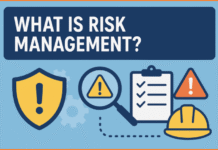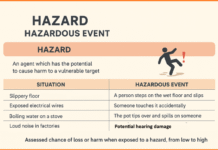Contents
Introduction to ANSI/ASSE Z10
The ANSI/ASSE Z10 standard plays a crucial role in the realm of occupational health and safety management systems (OHSMS). Developed by the American National Standards Institute (ANSI) and the American Society of Safety Engineers (ASSE), it offers a comprehensive framework aimed at enhancing workplace safety and health. The significance of ANSI/ASSE Z10 lies in its systematic approach to identifying, evaluating, and mitigating risks, thereby fostering a safer working environment.
The development of ANSI/ASSE Z10 began in the early 2000s, driven by the need to establish a standardized protocol for OHSMS in the United States. The standard was meticulously crafted through the collaborative efforts of safety professionals, industry experts, and government representatives, reflecting a consensus on best practices in occupational health and safety. This rigorous development process ensures that ANSI/ASSE Z10 remains relevant and adaptable to the evolving needs of various industries.
The primary objectives of ANSI/ASSE Z10 are multifaceted. It aims to prevent workplace injuries and illnesses by promoting proactive hazard identification and risk assessment. Additionally, the standard emphasizes the importance of continuous improvement in safety performance, encouraging organizations to regularly review and refine their safety protocols. By doing so, ANSI/ASSE Z10 helps businesses cultivate a robust safety culture, where the well-being of employees is prioritized.
Implementing ANSI/ASSE Z10 offers numerous benefits across different sectors. For instance, it can lead to a significant reduction in workplace incidents, which in turn minimizes downtime and associated costs. Moreover, adherence to the standard enhances an organization’s reputation as a responsible and safety-conscious entity, which can be advantageous in attracting and retaining talent as well as securing business partnerships. Ultimately, ANSI/ASSE Z10 serves as a vital tool for organizations committed to safeguarding their workforce and ensuring operational excellence.
The Role of Top Management Leadership
The implementation and success of the ANSI/ASSE Z10 standard heavily depend on the commitment and active involvement of top management. Leadership at the highest level is pivotal in establishing a robust safety culture within any organization. It is the responsibility of top management to set clear and comprehensive safety policies that align with the values and goals of the organization. By doing so, they lay the groundwork for a safe working environment that prioritizes the well-being of employees.
Top management must ensure that adequate resources are allocated toward the implementation of the ANSI/ASSE Z10 standard. This includes financial investment, personnel, training programs, and necessary equipment. Without these resources, even the most well-intentioned safety policies will fail to materialize into effective practices. Leaders must also lead by example, demonstrating their commitment to safety through their actions and decisions. When top management visibly prioritizes safety, it sends a powerful message throughout the organization that safety is not just a policy but a core value.
Continuous improvement is another critical aspect influenced by top management leadership. Leaders must foster an environment where continuous assessment and enhancement of safety protocols are encouraged. This involves setting measurable safety goals and regularly reviewing them to ensure they are being met. The establishment of such goals provides clear benchmarks for success and facilitates the identification of areas needing improvement. By maintaining a focus on continuous improvement, top management can drive the organization toward higher safety standards over time.
In summary, the role of top management leadership is indispensable in the successful adoption of the ANSI/ASSE Z10 standard. Their responsibilities extend beyond policy formulation to include resource allocation, leading by example, and fostering a culture of continuous improvement. Through their commitment and actions, top management can significantly impact the safety culture and performance of the organization.
Employee Participation in OHSMS
Employee participation is a cornerstone of the ANSI/ASSE Z10 standard for occupational health and safety management systems (OHSMS). Active involvement of employees in various safety-related activities is critical for the successful implementation and continuous improvement of any OHSMS. This engagement ensures that workers, who are often the first to identify potential hazards, have a direct influence on the safety protocols that affect their daily tasks.
One primary way employees can contribute is through participation in safety committees. These committees typically consist of representatives from different areas of the organization, providing a diverse range of perspectives. Safety committees work collaboratively to identify potential hazards, develop safety policies, and monitor the effectiveness of implemented measures. Their role is not only advisory but also proactive, as they initiate and lead various safety initiatives.
Reporting hazards is another crucial aspect of employee participation. A robust hazard reporting system enables workers to report unsafe conditions or practices without fear of reprisal. Encouraging such reporting contributes to a culture of safety, where issues are addressed promptly, and preventive measures can be put in place. An effective hazard reporting mechanism is vital for identifying risks that may not be immediately apparent to management.
Additionally, employees play a significant role in risk assessments. Their firsthand experience and knowledge of the work environment are invaluable during the risk assessment process. By involving employees in identifying and evaluating risks, organizations can gain a more comprehensive understanding of potential dangers and develop more effective control measures. This collaborative approach ensures that risk assessments are thorough and practical, reflecting the actual conditions of the workplace.
The benefits of active employee participation in OHSMS are manifold. Engaged employees are more likely to adhere to safety protocols, as they have a sense of ownership and responsibility towards the implemented measures. This involvement leads to improved hazard identification, reducing the likelihood of accidents and incidents. Furthermore, fostering a collaborative work environment enhances overall morale and productivity, as employees feel valued and heard in matters concerning their safety and well-being.
Integrating Leadership and Participation for Effective OHSMS
The successful implementation of an Occupational Health and Safety Management System (OHSMS) as outlined in ANSI/ASSE Z10 hinges on the seamless integration of top management leadership and employee participation. This dual-focused approach ensures that safety is not only a top-down directive but also a collaborative effort that engages all levels of the organization.
One practical strategy for fostering collaboration is the establishment of regular safety meetings. These meetings provide a platform for both management and employees to discuss safety concerns, share insights, and develop action plans. By involving employees in these discussions, management can gain valuable perspectives that may otherwise be overlooked, thereby enhancing the overall effectiveness of the OHSMS.
Transparent communication channels are another critical component. Open lines of communication ensure that safety information is disseminated efficiently and that feedback from employees is received and acted upon promptly. This two-way communication builds trust and demonstrates a genuine commitment to safety, which can significantly improve employee morale and participation.
Joint safety training programs further solidify the integration of leadership and participation. These programs should be designed to cater to both management and employees, emphasizing the shared responsibility for workplace safety. Collaborative training sessions can break down hierarchical barriers and foster a culture of mutual respect and understanding, essential for a robust OHSMS.
Consider the case of XYZ Corporation, which successfully integrated these elements into their safety management system. By holding monthly safety meetings, establishing a transparent communication protocol, and conducting joint training sessions, XYZ Corporation not only reduced workplace incidents but also improved overall employee satisfaction. This holistic approach to safety management exemplifies the positive outcomes that can be achieved through the combined efforts of leadership and employee participation.
In summary, the integration of top management leadership and employee participation is crucial for the effectiveness of an OHSMS as per ANSI/ASSE Z10. Through regular safety meetings, transparent communication, and joint training programs, organizations can create a safer, more collaborative workplace environment. The experiences of successful organizations like XYZ Corporation underscore the benefits of this unified approach to safety management.





